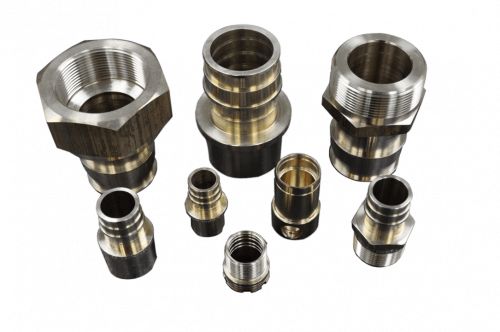 Multi-spindle machining, a cornerstone in the world of high-volume manufacturing, stands as a testament to the evolution of industrial capabilities. This advanced process leverages multiple spindles simultaneously to produce parts, significantly increasing output and efficiency.
Multi-spindle machining, a cornerstone in the world of high-volume manufacturing, stands as a testament to the evolution of industrial capabilities. This advanced process leverages multiple spindles simultaneously to produce parts, significantly increasing output and efficiency.
Through the application of Screw Machining principles, this method excels in creating uniform, complex components at a faster pace, optimizing the use of materials and energy. Integrating synchronized movements and precise controls maximizes productivity, establishing this approach as essential for competitive manufacturing landscapes.
What is Multi-Spindle Screw Machining?
This technique involves a series of spindles arranged around a central drum, each equipped with tools for various operations such as drilling, milling, and tapping. As the drum rotates, the workpieces are exposed to different tools, allowing multiple operations to be performed in a single pass. This setup speeds up the production process and ensures high consistency and precision across large production runs. The machine’s architecture allows simultaneous machining of several parts, dramatically reducing the cycle time per batch. Furthermore, this efficiency leads to substantial reductions in operational costs, substantially boosting manufacturing throughput and resource optimization.
Enhanced Productivity
The primary advantage of multi-spindle technology is its remarkable ability to enhance productivity. By integrating multiple operations into one seamless process, these machines can produce parts at a rate significantly faster than single-spindle machines. This efficiency makes it an ideal choice for industries that require large quantities of complex parts quickly, such as automotive and aerospace manufacturing.
Cost Efficiency
Another significant benefit of multi-spindle machining is cost efficiency. The simultaneous operation of multiple spindles reduces machine downtime and labor costs. Moreover, the high production speed decreases per-unit cost, making it economically advantageous for mass production. Reducing operational costs and increasing output allow manufacturers to maintain competitive pricing while upholding high-quality standards.
Precision and Consistency
Despite their high-speed operations, multi-spindle machines do not compromise precision. They are designed to maintain rigorous accuracy, producing parts with tight tolerances that are crucial for high-stakes applications in industries like medical devices and aerospace engineering. Consistency in production ensures that each part adheres to the specified dimensions and quality requirements, minimizing waste and rework.
Impact on Various Industries
Automotive Industry
The demand for precise and reliable components is ongoing in the automotive sector. Multi-spindle technology meets these requirements efficiently, producing components like screws, bolts, and engine parts with high precision. The ability to quickly produce large volumes supports the industry’s need for rapid production cycles and inventory management.
Aerospace Industry
The aerospace industry greatly benefits from the precision and reliability of multi-spindle machines. Components such as fasteners, bushings, and connectors must meet exacting standards, and the capability of these machines to produce these parts with consistent quality is invaluable. The technology supports the industry’s goal of zero failure rate in safety-critical applications.
Electronics Industry
As electronic devices continue to miniaturize, the need for small, precise components grows. Multi-spindle technology supports this trend by enabling the production of tiny, complex parts used in electronics, such as connectors and pins. The precision of these machines ensures the functionality and reliability of electronic devices, which are increasingly becoming an integral part of daily life.
Technological Advancements and Future Prospects
The future of multi-spindle technology looks promising with continuous CNC technology and automation advancements. These developments are likely to enhance the capabilities of these machines, making them even more efficient and versatile. Automation, in particular, can further reduce human error and increase production rates, paving the way for more innovative, faster, and more economical manufacturing processes. Integrating artificial intelligence and machine learning could also lead to predictive maintenance capabilities, optimizing machine life and minimizing downtime. Such innovations will enable manufacturers to achieve higher precision and adapt quickly to changing market demands.
Sustainable Manufacturing
Another evolving aspect of this technology is its contribution to sustainable manufacturing practices. By improving efficiency and reducing waste, these machines help minimize the environmental impact of production processes. Future innovations may focus on integrating greener technologies and materials that further reduce the ecological footprint of manufacturing operations. Enhancements like improved energy efficiency and using recycled materials in machine components are being explored. Additionally, adapting more advanced digital monitoring systems can optimize resource usage and reduce emissions, marking significant steps toward more sustainable industrial operations.
Multi-spindle Screw Machining technology has significantly changed the landscape of manufacturing by increasing productivity and maintaining consistency. Its impact is evident across various industries, from automotive to aerospace and electronics, where the demand for high-quality, precision parts is ever-present. As technology advances, the potential of this machining continues to expand, promising even greater efficiencies and innovations in the manufacturing world.






